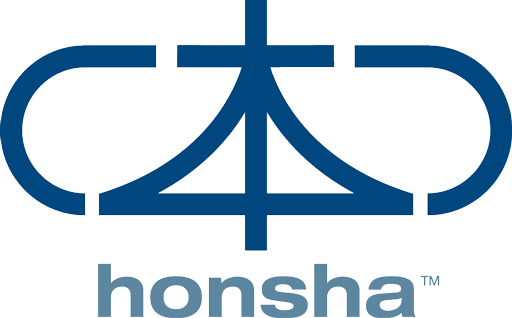
 Much has been said about the benefits of implementing Lean, but one question recurs: is Lean an expense or an investment? And when we try to answer this question, many others arise: what resources will be needed to implement a Lean program? How many people and materials? What area or infrastructure is needed? How many other means will have to be mobilized?
Much has been said about the benefits of implementing Lean, but one question recurs: is Lean an expense or an investment? And when we try to answer this question, many others arise: what resources will be needed to implement a Lean program? How many people and materials? What area or infrastructure is needed? How many other means will have to be mobilized?
Deciding before proceeding…
Before answering all these questions, we have to ask ourselves how much we are prepared to invest. Yes, because here we are not dealing with an expense or an implementation cost, but an investment. The big difference is that in the concept of investment you expect a return or benefit on the amount invested, while in the case of an expense it is something necessary for your business. This investment will require enormous dedication from your teams, such as several hours of training, simulations, Genba Walk, team support, leadership guidance, among other activities. A consultancy can show you the way, but you’ll be the one crossing the river.
One of the challenges for any manager is to deliver the best results with maximum efficiency. This challenge becomes even more complex when we talk about the size of the investment, as it must be justified by the gains associated with the implementation. Although there are huge gains in agility, decision making, team training and engagement in implementing the Lean program, organizations still have great difficulty in measuring any financial gains, since the basic concept is to produce more with fewer resources. So a clarification is needed: do we need to produce more to meet demand?
We can implement drastic changes by increasing production, but without the corresponding demand, we fall into the trap of becoming more and more efficient with stock as the destination of production. With constant demand, the way out is to produce the same quantity more efficiently, applying the concept of Takt-time: producing according to customer demand.
But how do we know if we are producing according to demand? And how do we calculate the return?
One way is to identify whether your customer is being satisfied by answering a few questions, such as: how many orders have not been filled? How many days late? What quantity and which products are overdue?
When we understand that there is an unmet demand and that the increase in production generates more sales, we transform the gains from the first decision of additional sales into the expected return on investment in the Lean program, and to calculate profitability, we apply the operating profit or EBTIDA (Earnings before interest, taxes, depreciation and amortization), according to the organization’s orientation.
Taiichi Ohno already warned us about the opposite case, where there is supply but not enough demand, in his book “The Toyota Production System: Beyond Large-Scale Production”:
“There is no more terrible waste in a company than overproduction.”
Production beyond what is necessary or overproduction makes stock the destination of the surplus and the calculation of the return on the application of Lean becomes clear when we see the reduction in stock and the availability of immediate cash that has not been tied up in the costs of production beyond demand.
In the case of constant demand, where we have to focus on costs, the first step is to understand the company’s cost structure and, from there, translate the Lean gains into financial gains. The natural path is to analyze the 7 wastes:
1. stock: based on your delivery frequency, check when you have stock. Reducing stock immediately translates into available cash flow. Another aspect is the amount of packaging, warehouses, personnel, handling equipment, etc. needed before and after.
2. Handling: reducing handling will show up in optimizing manpower or reducing overtime.
3. Transportation: reduction in freight, costs of vehicles, tugs, forklifts or operators needed to take products from one place to another.
4. Scrap: reducing rework or scrapped parts will have an effect on the number of good parts delivered to your customer or next process.
5. Processing: as with scrap, elimination or reduction will result in a greater quantity of good parts by avoiding the accumulation of hours that do not add value to the customer.
6. Waiting: reduction in manpower or overtime as time will be better used. It can also be translated into larger quantities.
7. Overproduction: reduction of all manufacturing costs, including materials, since you will only produce according to demand.
The increases in production mentioned above will be transformed into sales or lower cost per piece, since production per man-hour will increase. The people removed from the process are
The reduction of the 7 wastes is identified mainly through Genchi Genbutsu (checking the facts where they occur), using 5S to facilitate visualization and applying concepts such as Standardized Work, Pokayoke, Jidoka, Kanban, JIT, Takt Time, Continuous Flow, SMED, Problem Solving, FMDS, MFV, among others. One concept applied in isolation will not make the organization Lean, but it will be a step towards changing the culture. The view of a toolbox is inadequate, since we can choose not to use a tool or to use the wrong one.
Other potential gains from Lean in addition to those already mentioned are: reduced investment in purchasing or renting equipment, as this is more readily available (cash flow) and; reduced area costs, such as renting sheds, tents and warehouses.
Once this has been clarified, the conclusion we have reached is that any expenditure on implementing Lean has to go through a return on investment analysis, since an implementation with methodology, technique and knowledge will lead to a financial gain. The investment is temporary, but the gain is permanent.
José C. Farias,
CFO of Honsha.ORG, economist with an MBA in Business Management, with more than 26 years’ experience at Toyota in Brazil, Japan, Argentina and Venezuela, has worked in Strategic Planning, Manager of Corporate Finance, Human Resources, Training, Administration, Industrial Safety, Environment and Production Planning and Control, certified as a TBP (Toyota Business Practice) and OJD (On the Job Development) instructor by Toyota Motor Corporation.
Click here to read other articles from Honsha.ORG.
Follow us on YouTube.
Your Content Goes Here
Your Content Goes Here
Your Content Goes Here




